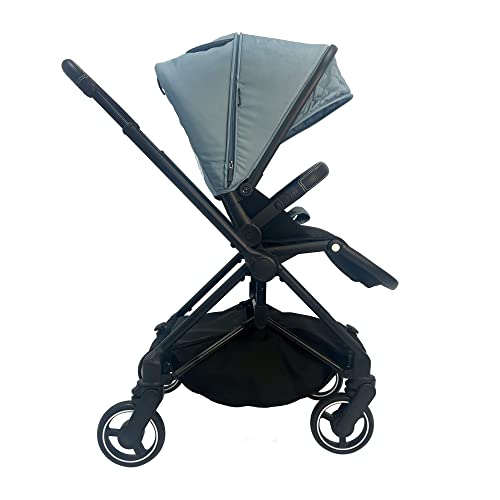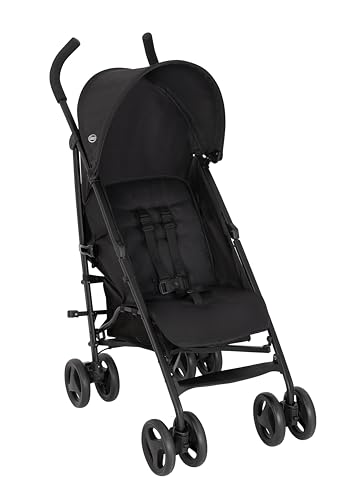Choosing Pushchairs For Your Baby
 A stroller, buggy or pushchair is a way to transport infants. Prams are equipped with the capacity of a carry cot, bassinet or frame to attach a crib. Newborns should lie flat.
A stroller, buggy or pushchair is a way to transport infants. Prams are equipped with the capacity of a carry cot, bassinet or frame to attach a crib. Newborns should lie flat.
Once a baby has good head control and is able to sit up they can be seated in an infant pushchair that has an incline that is either towards or away from you. Many pushchairs have useful features, such as swivel wheel or enclosed carrycots, and can be used as 3 in 1 systems.
Rear-facing
 When it comes time to choose the right pushchair for your new baby, there are plenty of choices to consider such as prams and pushchairs, to buggies and strollers. The terms may sound interchangeable however there are some important distinctions between them. A pram is designed to lie flat, whereas a stroller offers a seated position. Some babies can fit in both, but others require a carrycot until their necks and heads are strong enough to be supported in a seated position.
When it comes time to choose the right pushchair for your new baby, there are plenty of choices to consider such as prams and pushchairs, to buggies and strollers. The terms may sound interchangeable however there are some important distinctions between them. A pram is designed to lie flat, whereas a stroller offers a seated position. Some babies can fit in both, but others require a carrycot until their necks and heads are strong enough to be supported in a seated position.
The majority of experts agree that it is best to use a baby pushchair with the parent facing forward for infants up to a couple of months old. Babies are drawn to their parents’ faces and love the visual connection that this offers. This eye contact is essential to their emotional development as they learn to process the world around them. As they observe their parents’ interactions with one another they also begin to develop language skills.
When babies are able to see their parents and interact with them, they feel the feeling of security and confidence. They are confident that they can count on their parents to protect their children and assist them in navigating their environment. This early trust can contribute to an infant’s confidence and well-being as they develop into toddlers and explore the world on their own.
You can easily monitor your child while they are in the pushchair. You can easily check that your baby is comfortable and happy. Also, you can ensure that their hat isn’t covering their eyes and the wind isn’t blowing into their face. Babies who can see their parents are more likely to fall to sleep as they feel comforted by the familiarity of their faces.
If you want to keep your child in a pushchair with a parent’s view for as long as possible there are plenty of options to pick from. Some are designed to be able to switch between parent-facing and forward-facing while others come with an adjustable footmuff that can be extended for cold weather or a rain cover to keep the elements out. The Eezy S Twist+2 is a great example of a multi-purpose pushchair that can be changed from a parent-facing to an forward-facing unit with the push of a lever. It can be equipped with a Cocoon S Car Seat, Cot S Carrycot or the carrycot for a four-in-one travel system.
Forward-facing
A pushchair with a forward-facing view lets babies explore and enjoy the sights, sounds and smells of their surroundings. The baby also has the ability to see his parents, which is important for social development. Based on their own developmental milestones, most babies will be ready to transition from a newborn pram or carrycot to a forward-facing pushchair approximately six months. If they have enough head and neck control to be able to safely face forward, it’s the time.
Researchers have found that babies who are sitting with their parents while in a pushchair with their faces towards the front are more likely to speak back and show a lower heart rate which suggests they are less stressed. They also are more interested in what’s going on around them and their parents which can help stimulate their minds and develop their language skills. Parents are also more likely to chat with their child when they can see eye contact with them. This is an reassuring and soothing experience for them.
There are many advantages to using a front-facing pushchair from the moment of birth, such as being in a position to take longer walks. It is possible to take your child with you shopping or for other activities that require walking. In addition, a stroller or pushchair can offer your child the chance to experience things that their older siblings are doing, which is great for helping them build confidence and self-esteem.
Look for a pushchair with many accessories, including the footmuff, seat liner and pram blanket. When it’s hot outside the hood and a parasol will help safeguard your baby. Choose a parasol with a rating of SPF or UV50+ and ensure it is designed to fit your stroller and easy to attach. Many brands offer a range of accessories that could be included with the pushchair, whereas others are sold separately.
Many pushchairs can be converted to a double by adding an additional seat unit or carrycot, which is especially useful for families expecting a second child soon after the first. Some of these models come with everything you need to make the switch and some have the option of a converter kit, which can be purchased separately.
All-terrain
If you live along a country road, enjoy walks in the woods, or go hiking frequently and require a pushchair designed for rough paths and bumpy terrain. All-terrain pushchairs are built to withstand any terrain, and come with features like suspension to cushion bumpy rides for your child, so they won’t get shaken up as much. They also come with an angled seat that can disperse the force and impact of bumpy ground evenly over your child’s head and neck so that they won’t get shaken as much as they would in a stroller of lesser quality.
You’ll find that most all-terrain pushchairs are three-wheelers and include a front wheel that is able to swivel and lock into place for maximum mobility, which is essential for rough terrain. They will also have larger tires compared to your average pushchair. This means they are able to handle more rough terrain and provide an easier ride for you child.
When looking for an all terrain pushchair Another thing to consider is whether the wheels have air or foam filling. Air-filled tyres are more comfortable on rough terrain, but they can puncture more easily when you hit something sharp. The tyres that are filled with foam are more durable and are less likely to puncture, which is why this is a better option for a pushchair up to 25kg that is all-terrain.
Some strollers that are all-terrain can be converted from single mode to double mode for the growing family. Other models can be used as travel systems with car seat adaptors. They are great for parents who are new. Certain models, like the Out ‘n’ About Nipper are suitable for babies due to their sloping seats, and the fact that you can use a carrying cot with these models.
The Nipper also comes with a wide range of accessories for a pushchair, including a raincover and an earmuff. It is easy to store because it folds compactly with one hand and stands on its own when folded. It comes with a 360-swivel lockable wheel and tyres that are foam-filled, never flat.
Weight
The choice of the best pushchair is a crucial choice that will impact the way you travel with your baby. The right model will allow your child to develop and grow in a safe and comfortable manner, while allowing you to enjoy all the family activities that are yet to come. This is a significant investment, so make sure you choose one that suits your budget and lifestyle.
Understanding the distinctions between a buggy, a traveling system and one pushchair is the first step. This guide will help parents comprehend the jargon and decide the best option for their new baby.
As the name suggests it is designed for babies and newborns between 6 and 6 months of age. It allows your baby’s back to develop properly by allowing them to sleep on their backs. Some models come with a bassinet that can be used during the first few months to give your baby an environment that is safe and comfortable for your baby.
However, be aware that not all pushchairs that say they can lie flat actually can. Be wary of the manufacturers of claims that a pushchair can recline flat and always read the fine print to find out what this actually means. Some pushchairs from birth, Legendawiw.ru, can only offer some degree of recline, which is more than a seat with a full recline.
When your baby can sit up on their own without assistance, it’s the perfect time to put them in a pushchair. This typically happens between three to four months. However, some babies will start sitting up earlier. It is recommended to purchase a pushchair which can convert from a carrycot into an actual seat. This will give you more flexibility and will keep your child secure until they are ready to move on.
Parents prefer a light pushchair with just one pedal to brake, especially for those who want to chat or carry shopping bags in their hands. Jessica who is our MFM home tester, gave this pushchair an enthusiastic thumbs-up, stating that “it performs flawlessly and is a comfortable ride, and the one handed fold is a delight”. The lightweight model features Tru-Ride technology tyres, which are incredibly durable, puncture resistant and offer a high level of performance.


